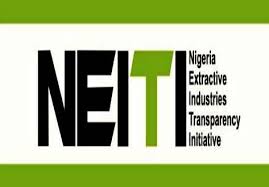Akwa Ibom State in the South-South Region of Nigeria collected N50.44 billion, the highest from the Federation Accounts Allocation Committee (FAAC) in the first three months of this year.
Also, Osun State in the South West Region of the country got N4.99 billion, the lowest from the FAAC in the first quarter of 2018, indicating a variance of 920 per cent between the highest and the lowest, according to latest data released by the Nigeria Extractive Industries Transparency Initiative, NEITI.
Altogether, states in the South-South region including Akwa Ibom received N206.25 billion, the highest allocation from the committee in the first quarter of 2018.
The report entitled, ‘Analysis of FAAC Disbursements for the First Quarter of 2018,’ stated that the amount received by the six south-south states — Bayelsa, Rivers, Delta, Akwa Ibom, Edo and Cross River — accounted for 30.2 per cent of the total amount allocated to the 36 states.
Generally, the report noted that FAAC disbursed a total of N1.938 trillion in the first quarter of 2018, representing an increase of 37.3 per cent when compared with N1.411 trillion shared during the same period in 2017 and 71.1 per cent of the N1.132 trillion shared in the same quarter of 2016.
Giving a breakdown of the allocations, the report explained that the Federal Government received N812.8 billion; the 36 states got N683.4 billion, while N393.3 billion went to the 774 local government councils.
Further breakdown revealed that N655.2 billion was disbursed by FAAC in January, N635.6 billion in February, and N647.4 billion in March this year.
According to NEITI, on allocations received by each state, the report revealed that Akwa Ibom got the highest amount of N50.44 billion while Osun State received the lowest net share of N4.99 billion, a variance of 920 per cent between the highest and the lowest.
“These disparities in FAAC disbursements suggest differences in revenue capacities of different states and the implications for expenditure decisions in the affected states.
“The amount disbursed in the first quarter of 2018 exceeded amounts disbursed in the previous 13 quarters, up to the fourth quarter of 2014. However, these amounts are still lower than amounts typically disbursed before the oil price crash of 2014. Prior to the crash in oil prices, quarterly disbursements exceeded N2 trillion.”

